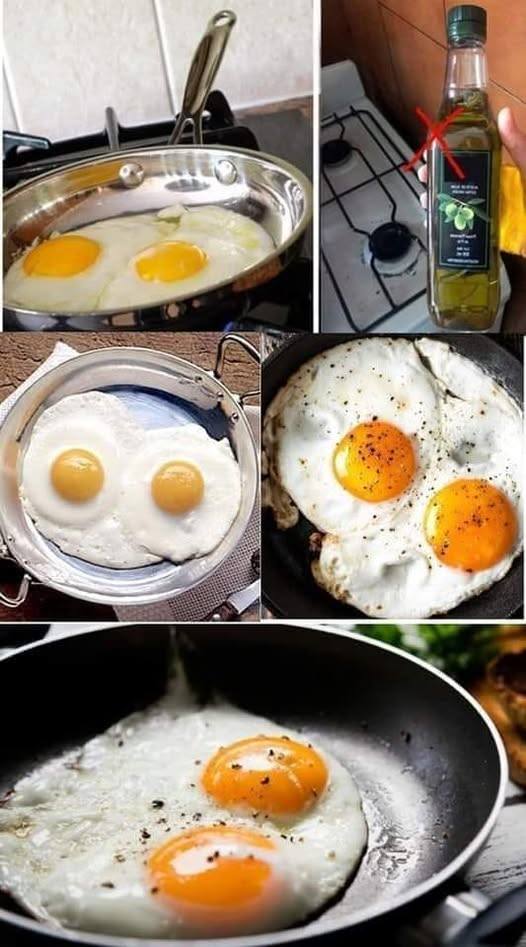ADVERTISEMENT
Step 2: Add a Small Splash of Water
Once the pan is heated, instead of adding oil or butter, pour in just a small splash of water (about 1-2 tablespoons). This will create a steam-like effect, which prevents the eggs from sticking and helps cook them more evenly. You can also use vegetable broth for a burst of extra flavor.
Step 3: Crack the Egg Into the Skillet
Gently crack your egg into a small bowl first (to avoid any eggshell mishaps), and then carefully slide the egg from the bowl into the skillet. Be sure not to break the yolk!
Step 4: Cook the Egg
Cover the skillet with a lid to trap the steam. The steam will cook the egg from the top while the water sizzles underneath, giving you a perfectly fried egg without any added fat. Let the egg cook for about 3-5 minutes, depending on how runny you like your yolk.
- For a runny yolk: Cook for 3 minutes, and then carefully remove the egg.
- For a firm yolk: Cook for 5 minutes or longer, depending on your desired consistency.
If you prefer a crispier edge, you can leave the lid off for the last minute of cooking.
Step 5: Season the Egg
Once your egg is cooked to your liking, sprinkle it with salt, pepper, or any seasonings you prefer. A sprinkle of garlic powder, smoked paprika, or fresh herbs like chives can take the flavor to the next level.
Step 6: Remove the Egg and Serve
Use a spatula to carefully lift the egg from the skillet and place it on a plate. Serve your egg on toast, over a salad, or with other breakfast items. You can even make a breakfast bowl with sautéed veggies, quinoa, or avocado!
Tips for Perfect Fried Eggs Without Oil
- Use Fresh Eggs: Fresh eggs are key to getting a good fried egg. Older eggs are more likely to break apart and stick to the pan, making the cooking process more difficult.
- Don’t Rush the Heat: Cooking over medium heat is crucial for avoiding burnt edges or overcooking the egg. If the heat is too high, the egg will cook too quickly and might not come out as nicely.
- Experiment with Broth: If you want to add flavor without oil, try cooking the eggs in vegetable or chicken broth. The broth will infuse a subtle flavor into the egg while still preventing it from sticking.
- Covering the Pan: Keeping a lid on the skillet is essential for steaming the top of the egg and ensuring that it cooks evenly. If you prefer a fried egg with no runny yolk, you can cover it for the entire cooking process.
- Use a Non-stick Pan: This is the most important tip when cooking eggs without oil. A high-quality non-stick skillet will make your job much easier, as the eggs will slide right off and won’t stick to the surface.
Why This Method Works
- Moisture from Water or Broth: The steam created by the small amount of water or broth allows the egg to cook evenly while preventing it from sticking to the pan. It’s a gentler way to cook, especially if you want a soft and silky yolk.
- No Added Fat: Skipping the oil or butter keeps your meal lighter and healthier, while still giving you that crispy edge on the egg whites.
- Simple and Quick: This method is easy to follow and doesn’t require any complicated steps or ingredients, making it ideal for busy mornings or a quick meal.
Conclusion
Making fried eggs without oil is a simple and healthy alternative to the traditional method. With just a splash of water or broth, you can achieve a delicious, non-stick fried egg with minimal effort. Whether you’re cutting out oil from your diet, trying to make your meals a bit lighter, or simply looking for a new way to enjoy eggs, this method will help you make perfectly fried eggs every time—crispy, flavorful, and totally oil-free.
Next time you’re craving fried eggs, give this method a try—you’ll be amazed at how easy and tasty it can be!
ADVERTISEMENT
